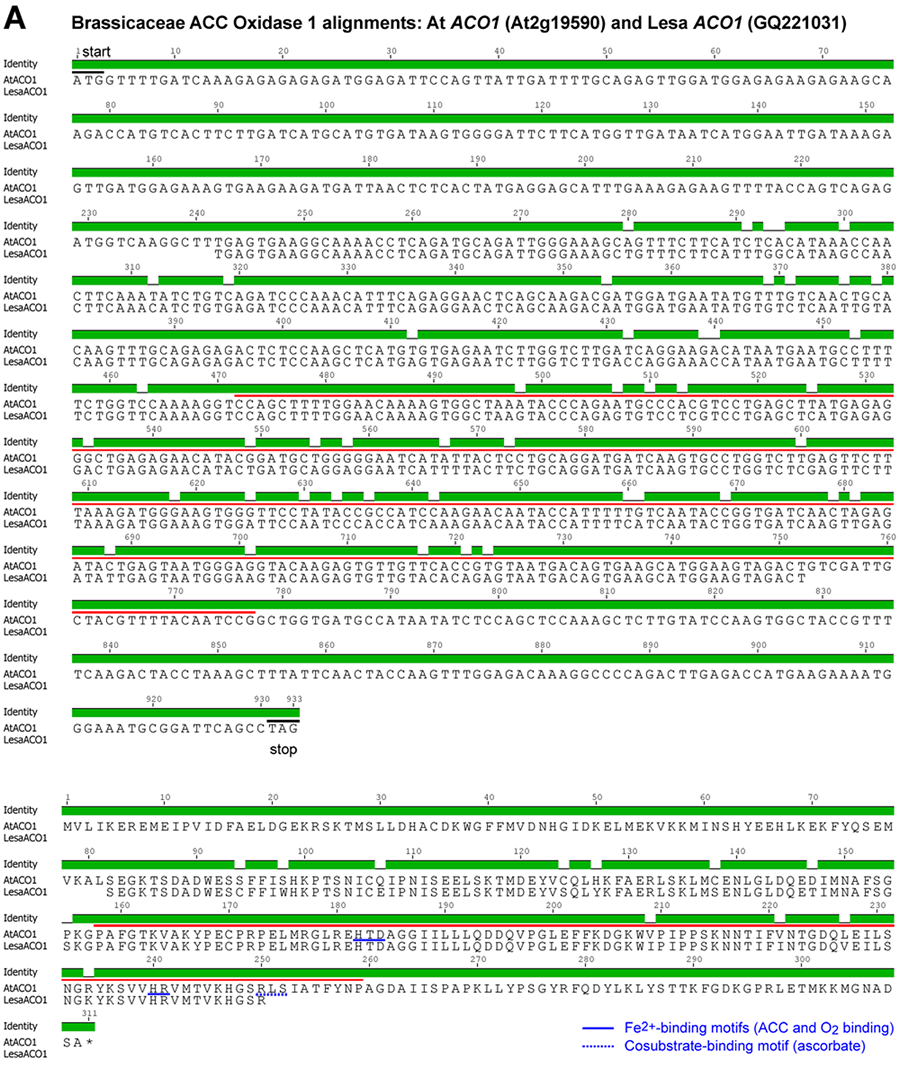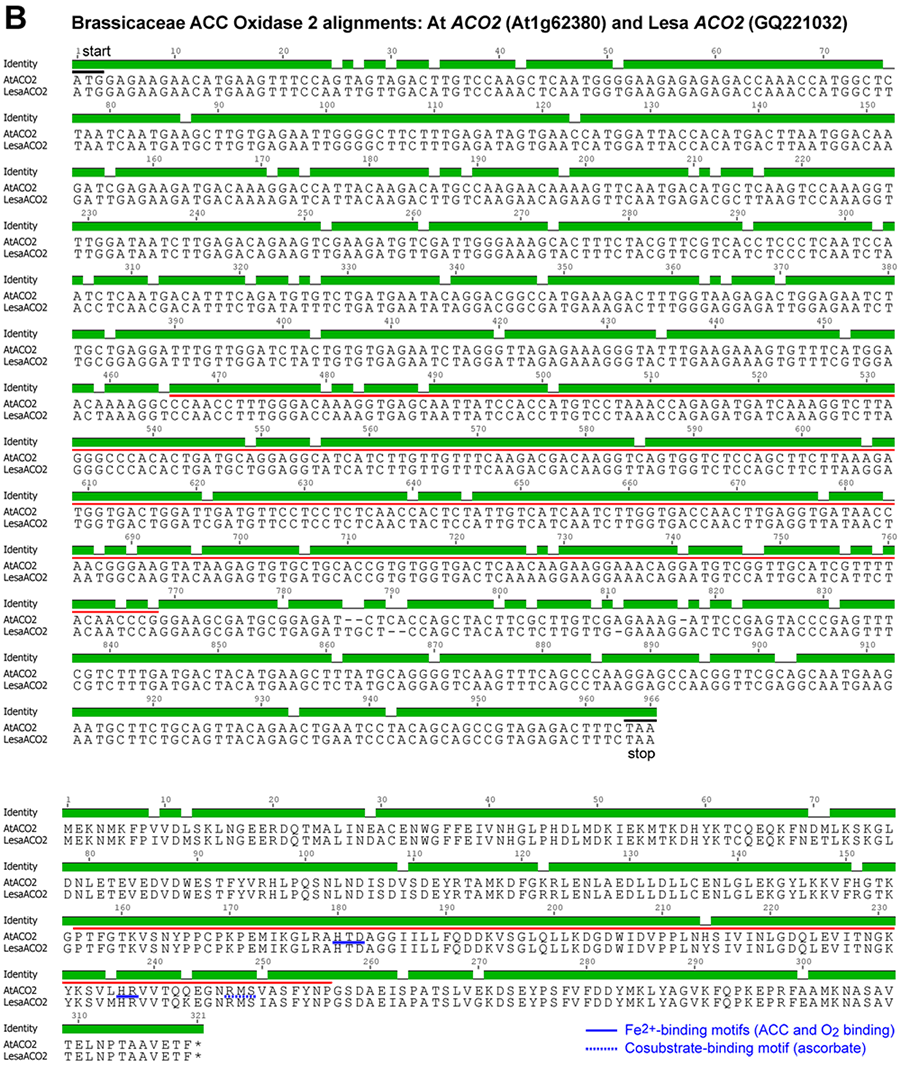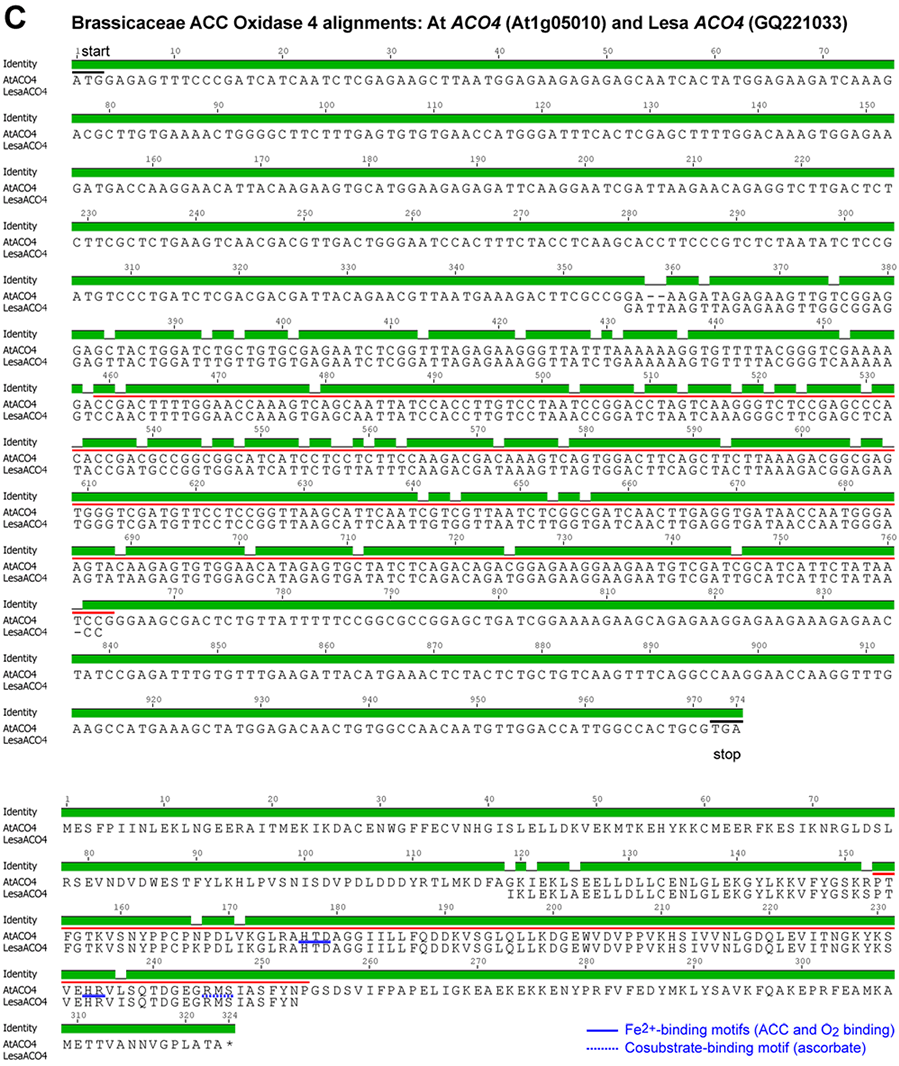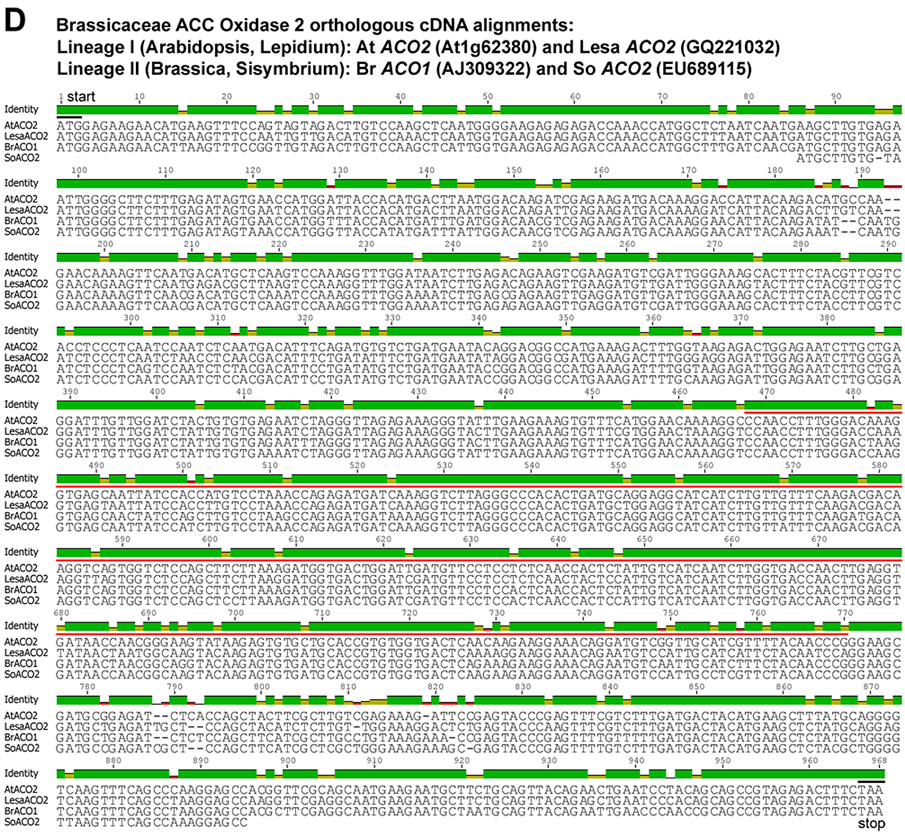The Plant Cell: Cell 21: 3803-3822 (2009)
Ethylene interacts with abscisic acid to regulate endosperm rupture during germination: a comparative approach using Lepidium sativum and Arabidopsis thaliana [W][OA]
Warwick Horticulture Research International (HRI), Warwick University, Wellesbourne, Warwick CV35 9EF, United Kingdom (Ka.M., C.S.C.C., J.R.L., W.E.F.-S.)
Palacky University and Institute of Experimental Botany Academy of Sciences of the Czech Republic, Laboratory of Growth Regulators, CZ-78371 Olomouc, Czech Republic (V.T., M.S.)
Université Pierre et Marie Curie-Paris 6, Germination et Dormance des Semences, UR5, Site d'Ivry, F-75005 Paris, France (F.C.)
Received July 23, 2009; Returned for revision October 12, 2009; Accepted November 17, 2009; Published December 18, 2009
www.plantcell.org/cgi/doi/10.1105/tpc.109.070201




Supplemental Figure 3. Brassicaceae ACC oxidase (ACO) sequence comparisons.
(A-C) Alignments of Arabidopsis thaliana Col and Lepidium sativum FR14 mRNA (cDNA) and amino acid sequences of the ACO orthologs. The conserved InterPro (www.ebi.ac.uk/interpro/) domain regions of 2OG-Fe(II)-oxygenases are underlined in red. The start and stop codons in the cDNA sequences are underlined and marked as start and stop in black. The conserved active binding site motifs for the substrates ACC and O2 as well as the cosubstrate binding site for ascorbate (Seo et al. 2004) are underlined in blue in the amino acid sequences and indicate that these proteins are functional ACOs.
(A) Arabidopsis ACO1 (At2g19590) and Lepidium ACO1 (GQ221031).
(B) Arabidopsis ACO2 (At1g62380) and Lepidium ACO2 (GQ221032).
(C) Arabidopsis ACO4 (At1g05010) and Lepidium ACO4 (GQ221033).
The corresponding Arabidopsis ACOs and Lepidium ACOs are true orthologs based on the highest BLAST hits and the molecular phylogenetic analysis.
(D) Alignment of Brassicaceae ACO2 orthologs which show transcript expression pattern in seeds (Fig. 7F) that are associated with germination responses. Brassicaceae lineage I (Arabidopsis thaliana (At), Lepidium sativum (Lesa)) and lineage II (Brassica rapa (Br), Sisymbrium officinale (So)) cDNA sequences are presented. At least three independent cDNA clones were sequenced for each Lepidium ortholog.
Synopsis: Tissue weakening of the endosperm is required to allow radicle protrusion during seed germination. Cross-species work including tissue-specific transcriptome analysis and biomechanical measurement of endosperm weakening provided a new mechanistic model that explains how ethylene promotes seed germination and counteracts the inhibition of endosperm cap weakening by abscisic acid.
| Article in PDF format (1.8 MB) Supplemental data file (1.8 MB) Abstract of Plant Cell 2009 |
|
|
|
The Seed Biology Place |
Webdesign Gerhard Leubner 2000 |